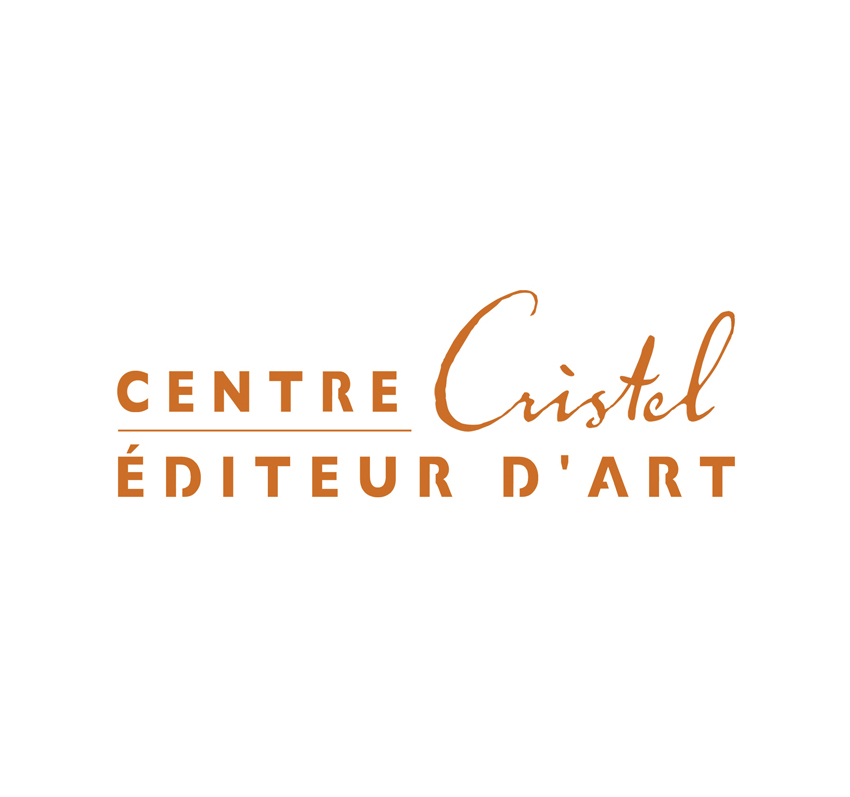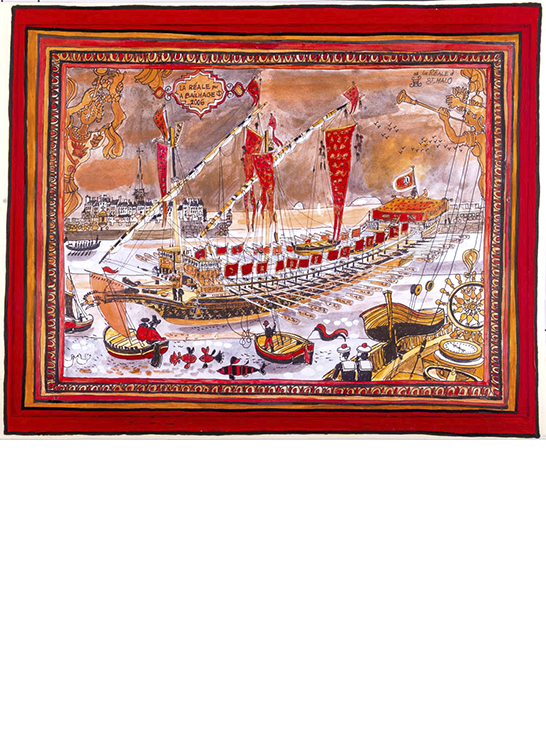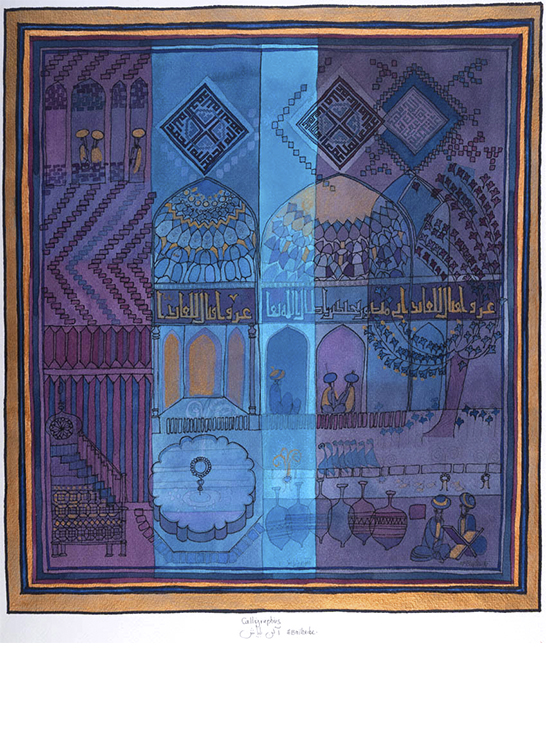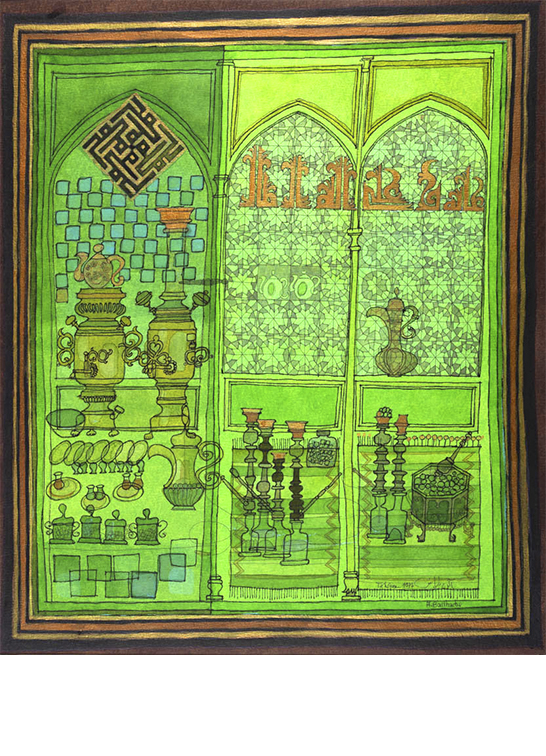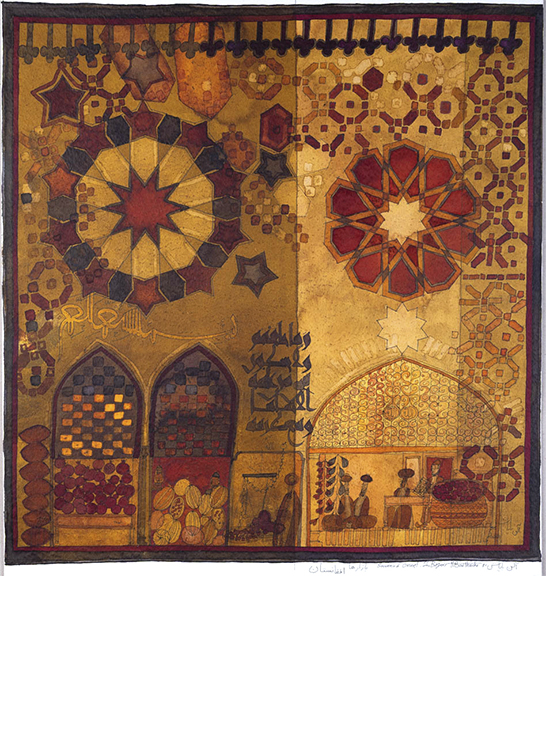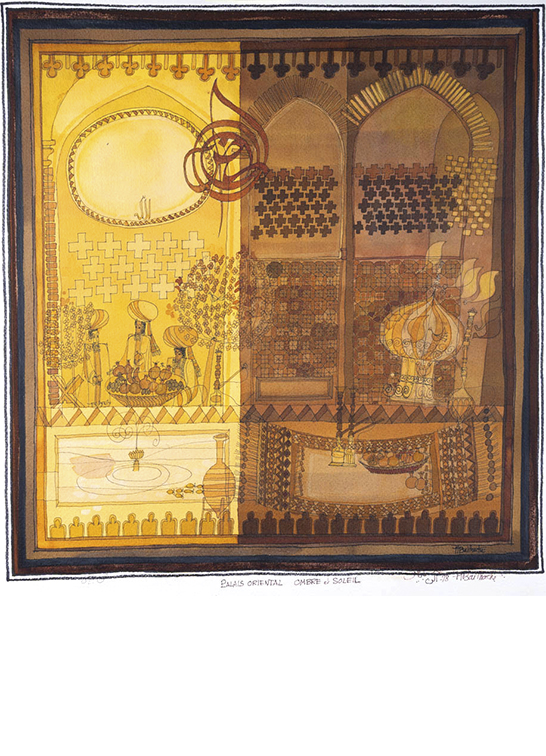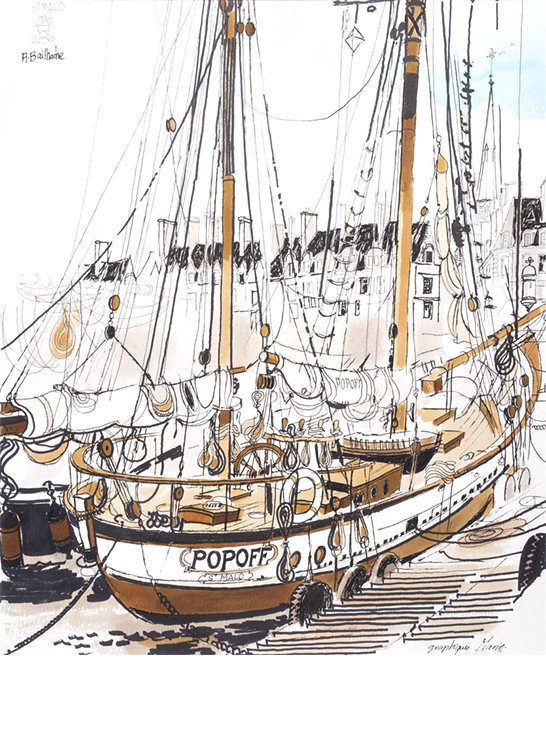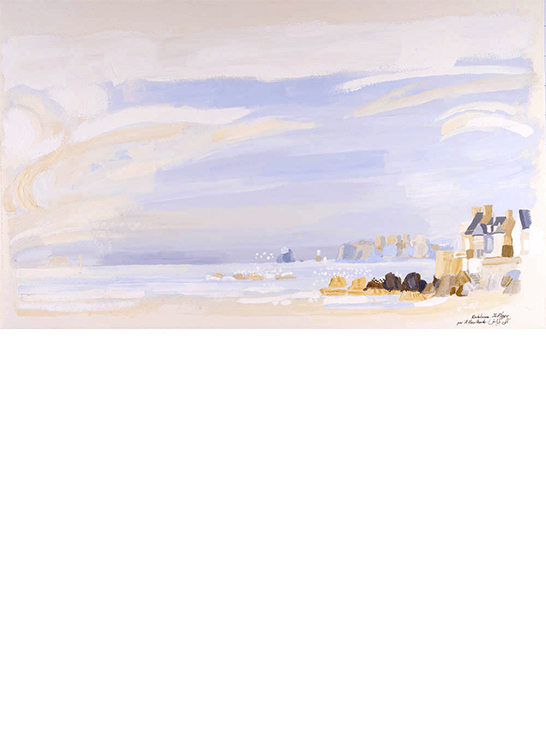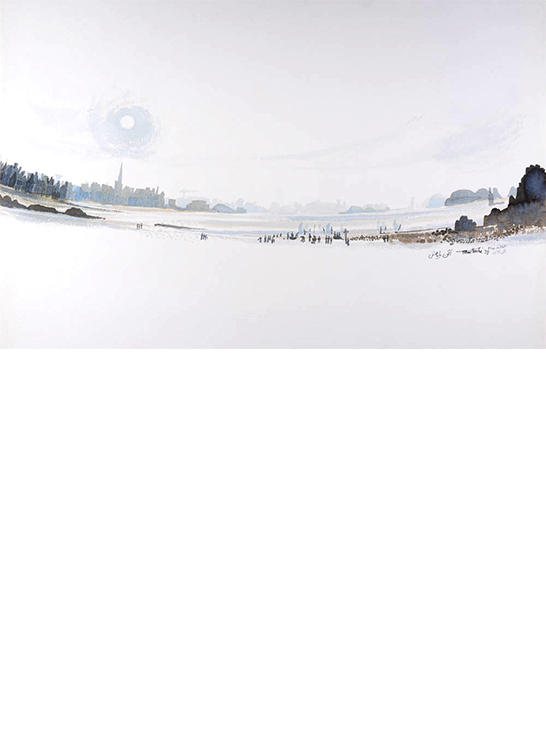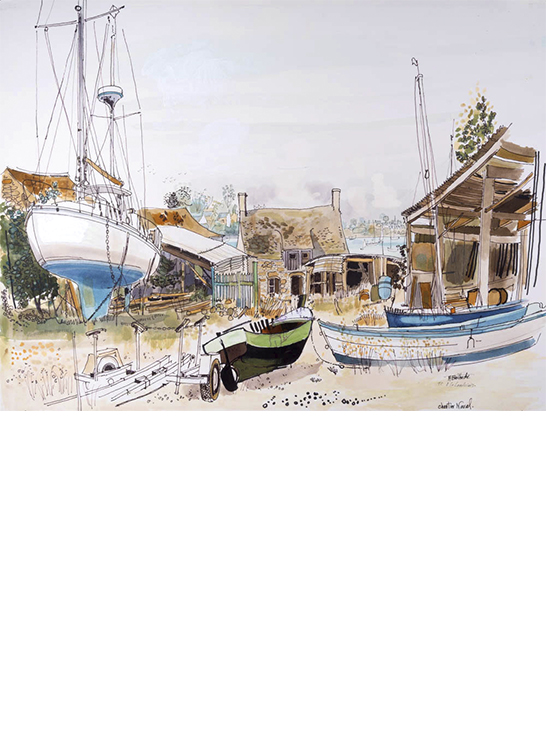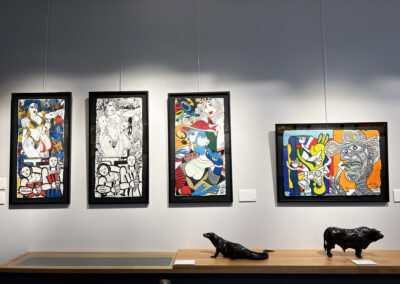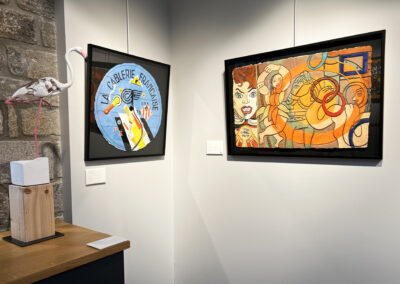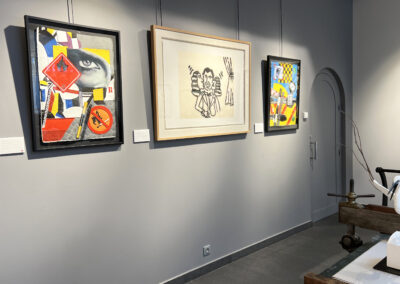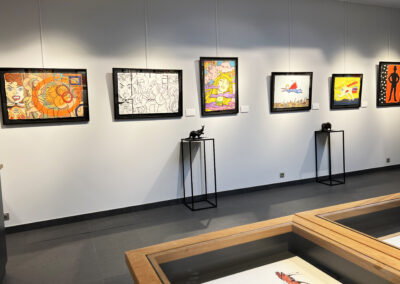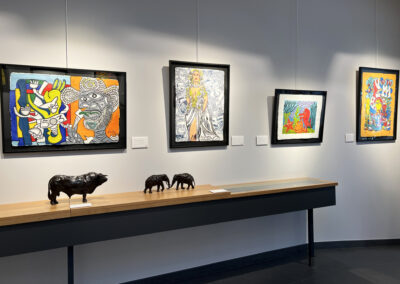Exhibition Aquagravure. Grand masters in relief
From March 25 to July 1st 2023
Not everyone in the history of art is recognized as the inventor of a technique. Strictly speaking, in the secrecy of his workshops, Pablo Picasso never invented anything. Entrusting himself to the skilled hands of potters, enamelers, gilders or lithographers, he simply let his genius run free, bringing his glory to the tradition of the multiple. What would he have thought, in 1989, if he’d still been working, and had met Bernard Pras, the inventor of aquagravure? We like to imagine the scene… On one side, the little man with a round face and dark, lively, mobile eyes, like those of a faun or a bullfighter. On the other, Bernard Pras, thirty-seven at the time. An artist who also graduated from the Toulouse School of Fine Arts in 1974. His hope as he started his career? To paint and photograph the universe. Painting, photography, but also innovation, for this print enthusiast was thinking of a new technique, capable of producing limited, individually numbered and signed prints.
Exhibited works
Aquagravure. Grand masters in relief
Not everyone in the history of art is recognized as the inventor of a technique. Strictly speaking, in the secrecy of his workshops, Pablo Picasso never invented anything. Entrusting himself to the skilled hands of potters, enamellers, gilders or lithographers, he simply let his genius run free, bringing his glory to the tradition of the multiple. What would he have thought, in 1989, if he’d still been working, and had met Bernard Pras, the inventor of aquagravure? We like to imagine the scene… On one side, the little man with a round face and dark, lively, mobile eyes, like those of a faun or a bullfighter. On the other, Bernard Pras, thirty-seven at the time. An artist who also graduated from the Toulouse School of Fine Arts in 1974. His hope as he started his career? To paint and photograph the universe. Painting, photography, but also innovation, for this print enthusiast was thinking of a new technique, capable of producing limited, individually numbered and signed prints. He could have been told that wood engraving, practiced in China since the 7th century, was available for this purpose. That metal engraving was invented in Florence in the 15th century. That there was lithography, gradually perfected between 1795 and 1799 by a marvelous Bavarian, Aloys Senefelder. Finally, that there were also the solid colors of silkscreen printing, brought back into fashion by the troublemakers of American pop art… But it just so happened that Bernard Pras had little taste for the uniform use of solid colours. What was he dreaming of, faced with the unknown of a blank sheet of paper? Stronger colors. More vibrant colors. Ruffled, streaming colors, like a woman slowly shaking her hair under a circle of light. Warm, gnarled, muscular colors, less painted than sculpted. In other words, relief paintings!
As you can see, it’s a crazy project, bearing the unusual name of aquagravure! It’s a project he developed little by little, in the spirit of craftsmen who make and unmake, guided sometimes by their instinct, sometimes by the material. Not forgetting, of course, the natural momentum of children drawing in the sand, their conscientious fingers forming hollows and bumps, nuances, revisions. Is this what Bernard Pras had in mind when he turned to Jacques Bréjoux, a manufacturer of rare papers based in Moulin du Verger, to the south of Angoulême? In any case, these two enthusiasts agreed on a sensational process: the simultaneous creation of etching and paper! In this case, the creation by an artist of a wax bas-relief to be used as a matrix (step 1). Then, based on this work, the creation of a mold for the prints (step 2). After that, using a brush, the colorization of the mold according to the original model (step 3). Then, on a sieve, a specially prepared, diluted, hand-coated paper pulp is deposited (step 4). Place the mold on the paper paste and press for five minutes to set the design and the colors (step 5). Retouching and color highlights (step 6). Finally comes the patient drying process, lasting five long weeks (step 7), before the painter comes to apply the final touch: his signature – that of the greatest!
For its thirty-third exhibition, the Cristel Éditeur d’Art Center in Saint-Malo is immensely pleased to present aquagravures by Eduardo Arroyo, Erró, Peter Klasen, Hervé Di Rosa, Antonio Seguí, Speedy Graphito and Jacques Villeglé. Twenty prints, never exactly identical (they’re like twins, each living their own life!). And 7 artists oh so famous, oh so admired, shown in museums all over the world. The genius of a technique. The genius of people.
Christophe Penot
Art editor
